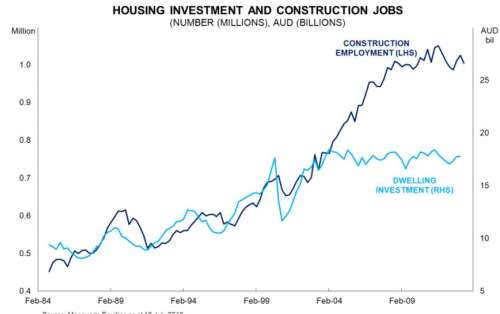
Global share markets rebounded strongly in July and the Australian market didn’t miss out this time. The All Ordinaries Index gained 5.5% for the month to close at 5,035.7 points.
In key international markets, the Dow Jones Index gained 4.0%, the FTSE gained 6.5%, the Hang Seng gained 6.3% and the Nikkei 225 gained 0.8%. The turnaround comes as the US Federal Reserve ‘hosed-down’ fears of prematurely easing its market stimulus program.
While the US Federal Reserve has been the focus of recent newsletters, this month it is worth looking in detail at the Australian economy. In its July meeting minutes, the RBA painted a picture of an economy with little else to support growth other than exports and housing.
Interestingly, since the RBA board meeting in July, economic data suggests that the domestic economy is getting softer rather than improving (with weak business confidence, soft retail sales, higher unemployment, declining job ads and an expected ‘black-hole’ to be announced over the coming weeks in the Federal Budget).
What about the resources boom? Can this save the Australian economy again? There is no doubt that the largest mining investment boom in over a century has sparked a surge in constructions jobs (accounting for more than 1 in 5 of all jobs created since the end of 2002).
The chart below shows Australian construction jobs versus housing investment since 1984.

Source: Perpetual
With the mining investment boom having already peaked, it is expected that construction jobs could decline by over 15% over the next few years (or by over 175,000 workers). This is because it takes 5x as many people to construct and iron ore mine than to operate it! For a LNG plant it takes 20x more people to construct than to operate.
While many mining construction workers will try find new work in housing construction (although dwelling investment has stagnated as shown in the above chart), any new work will be no doubt on greatly reduced income levels. This is likely to weigh on consumer spending (which has been remarkably resilient in recent times).
What does this mean for investors? Clearly the Australian economy needs more interest rate support and one hopes that the debate at next Tuesday’s RBA board meeting is about the size of the cut, rather than the cut itself.
The Australian dollar is already in sharp decline (falling over 13% since the start of May) and this is expected to continue. Investors who allocate a larger portion of their portfolios to ‘unhedged’ international investments will be able to benefit from any continued depreciation to the Australian Dollar.
Residential property has been resilient in capital cities, and should be supported by historical low interest rates (it has never been cheaper to have a mortgage). However, I personally favour residential property investments closer to capital cities, as a surplus of construction workers are expected over the next few years.
Income investors need to brace themselves for a prolonged period of low interest rates and therefore lower returns until the Australian economy can return to sustained growth. High dividend paying Australian industrial shares will continue to be an appealing alternative for those willing to accept risk.
For more information please contact Ryan Love on 1300 856 338 or e-mail ryan.love@apexpartners.com.au.
This article is general information only and is not intended to be a recommendation. We strongly recommend you seek advice from your financial adviser as to whether this information is appropriate to your needs, financial situation and investment objectives.
